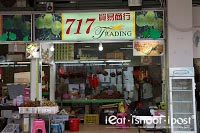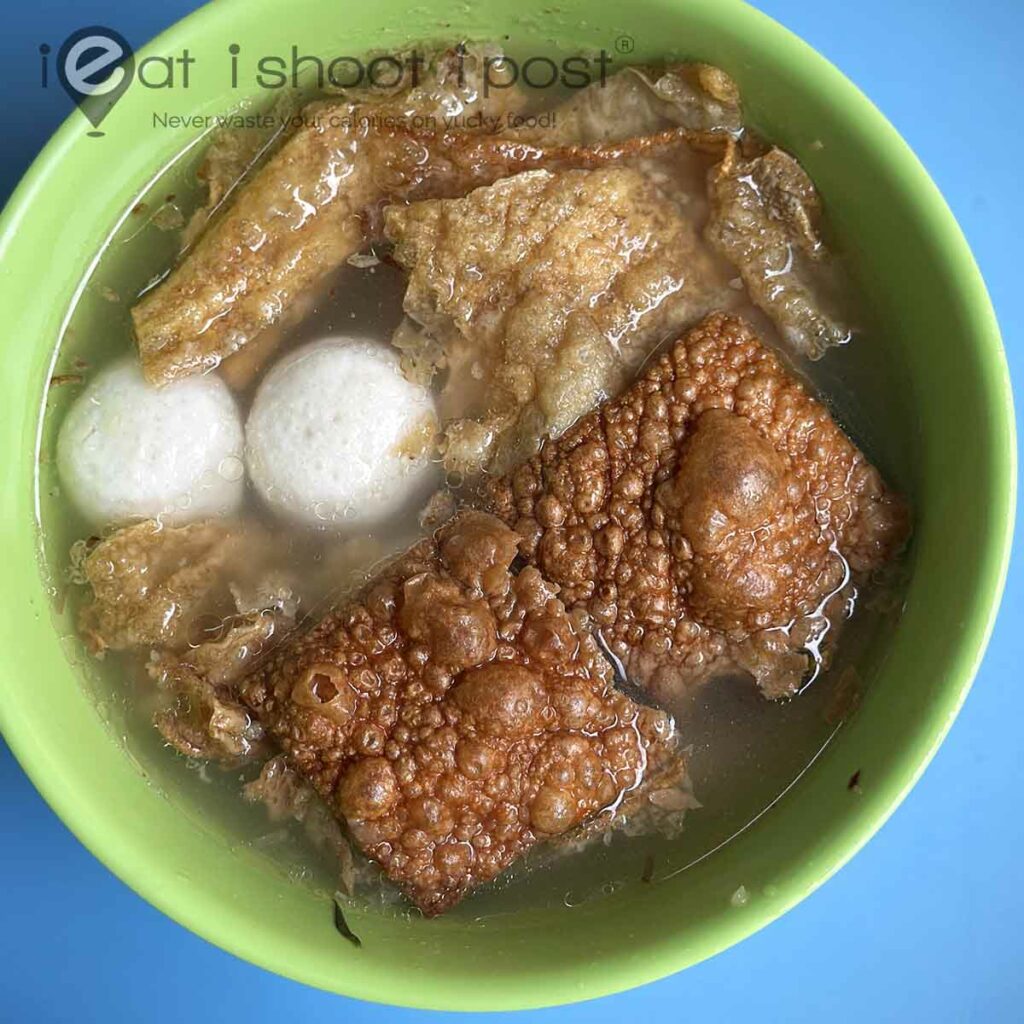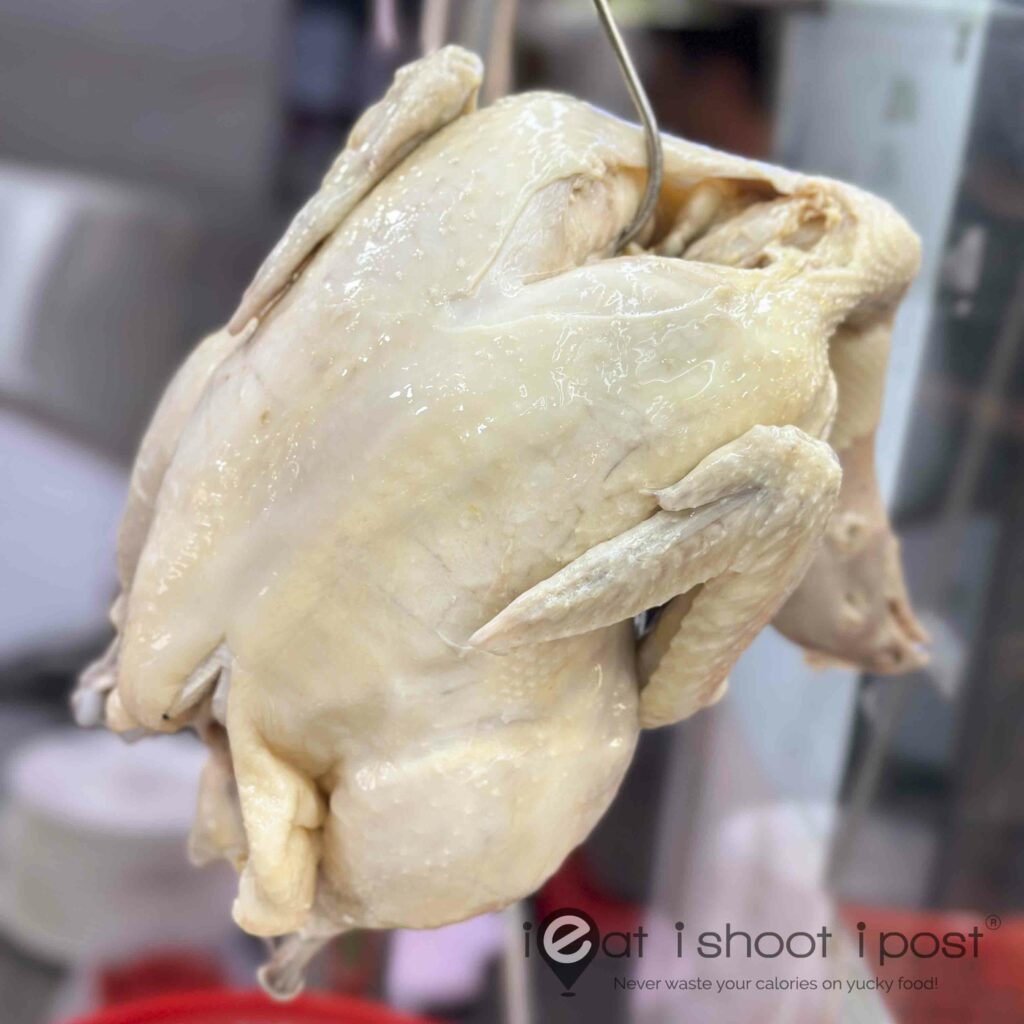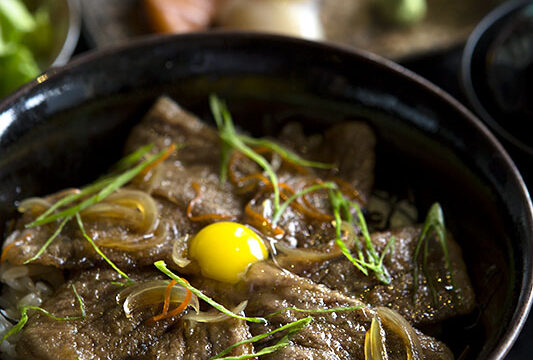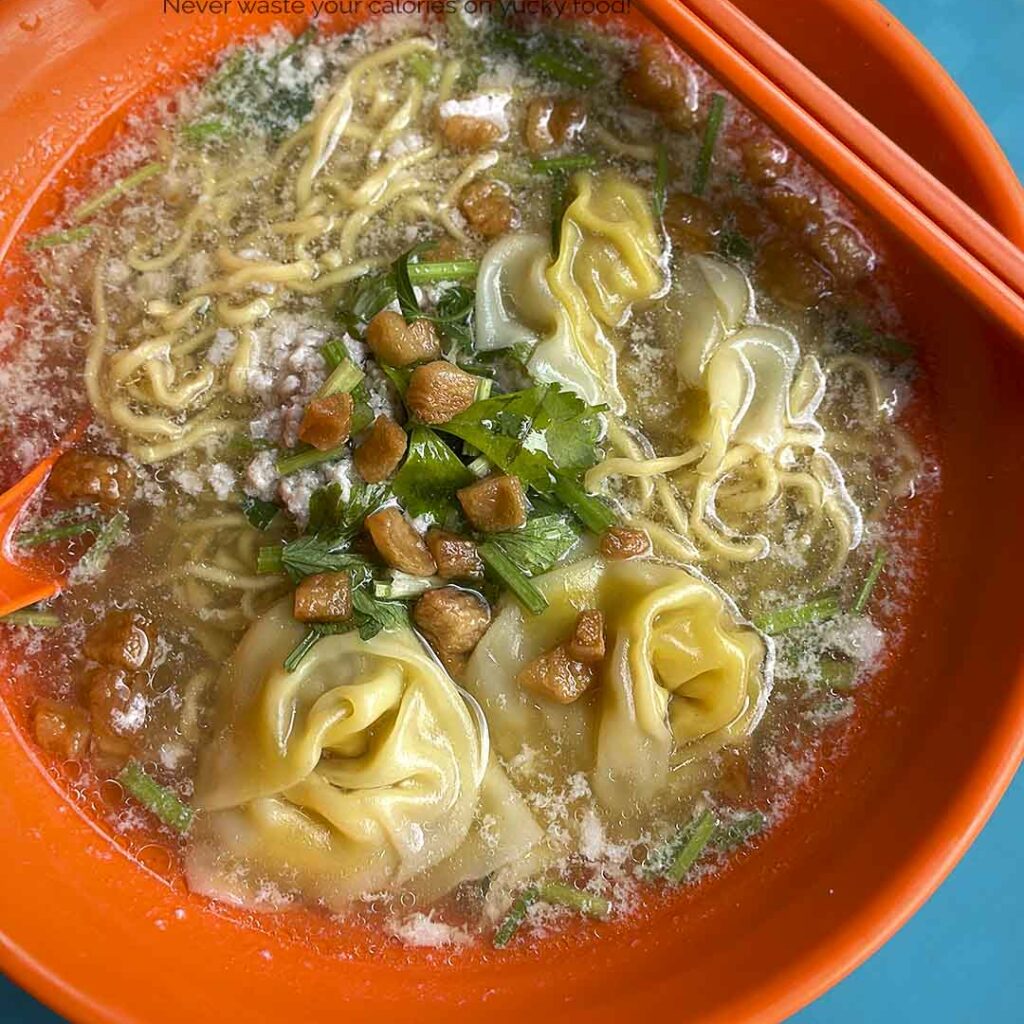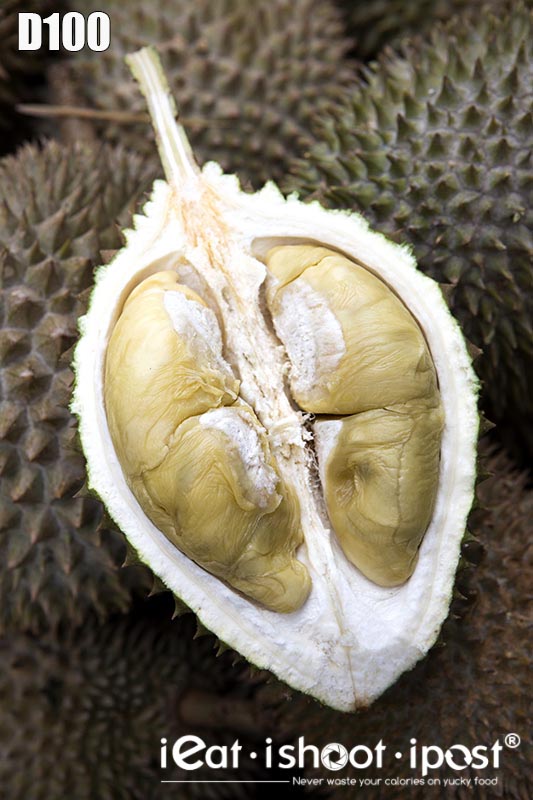
It’s been a rather fruitful (literally) Durian Season for me as I managed to expand the list of Durian cultivars as well as reliable Durian stalls on the blog. I hope that it will be a useful reference for you when you head out for your next Durian Feast!
As the season draws to a close, I return again to 717 Trading to speak to Mr Goh, the Durian seller who really got me started on my Durian exploration years ago with my first Durian post.
Mr Goh is a purveyor of quality Durians and his philosophy is that it is better to buy one good Durian and slowly savour it instead of buying many cheap ones and not enjoying them as much. So he only sells Durians which he personally enjoys eating and sources them from reliable plantations, a lot of whom use organic fertilizers for their Durians. But good quality also comes at a price, so you can expect the Durians here to be slightly more expensive than other stalls.

Mr Goh has been selling Durians in the Serangoon/Hougang area since the 70’s. In those days, he used to have a roadside stall along on 717 Upper Serangoon Road, a number he has since adopted as his brandname. He shared with me that in the old days, he used to source his Durians from local plantations in the Choa Chu Kang area. What they did was to “rent” the Durian trees and collect the fruits dropping from the tree for the whole season.
“Each tree costs $25 and we might rent 100 trees in the plantation!”, he told me nostalgically. “We will be very lucky if we made $1700 for the whole Durian Season!”
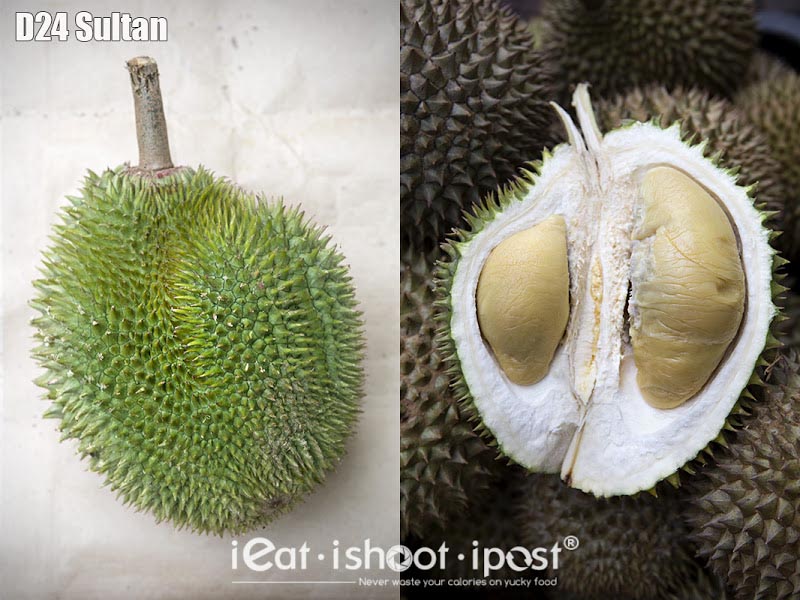
He proceeded to show me his stock of Durians which have just arrived earlier in the day. He keeps quite a few different cultivars here, so you will be able to find the popular cultivars as well as some less common ones.
As we come to the end of the Durian season, the D24 Sultan Durians start dropping. This is a very popular cultivar which has been given the name “Sultan” because it is so good, it is fit for royalty.

This is a small to medium sized fruit usually between 1 to 2 kg and has a thick light green husk. One of the tell tale signs of a D24 is what Mr Goh calls the “20 cent” sign which is an area at the base of the Durian that is devoid of spines around the size of a 20 cent coin.
“Uncle! This one only looks like ten Cents!” I remarked as I picked up a smaller fruit.
“Aiyah, some big some small, but the average D24 is 20 cents!” he tells me.
The flesh is generous, thick and yellow, very smooth and creamy with a bit of fibre that develops more flavour as you chew. The flesh may look voluptuous, but Mr Goh tells me that the amount of flesh you get per fruit is much less than that of the Golden Phoenix. However, each seed may be so well endowed that you probably would get satisfied only with a few seeds.
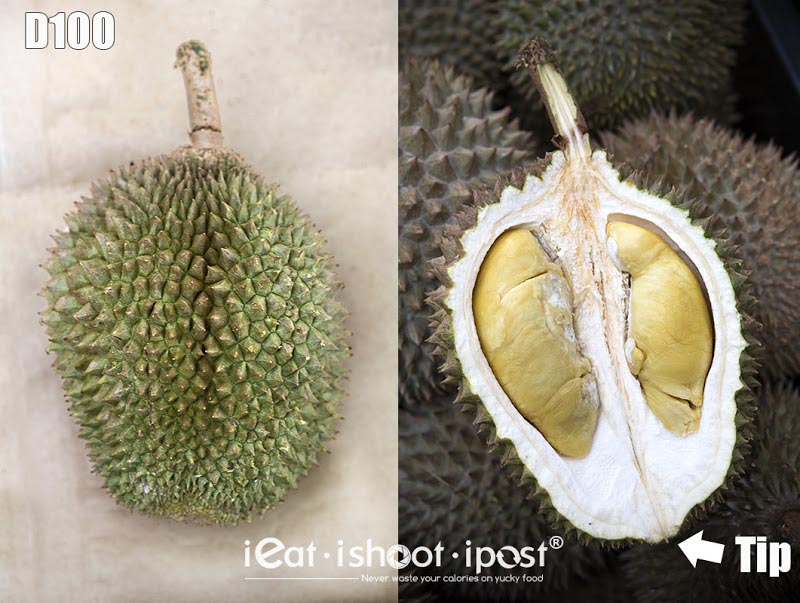
One of the cultivars which I have seen only at 717 Trading so far is the D100. This fruit is very similar to the D24 in terms of the flesh as it is generous, thick and yellow but the flavour is more intense. If you manage to get one like the one shown at the top of this post with dark greyish areas, then you are really in for a treat!
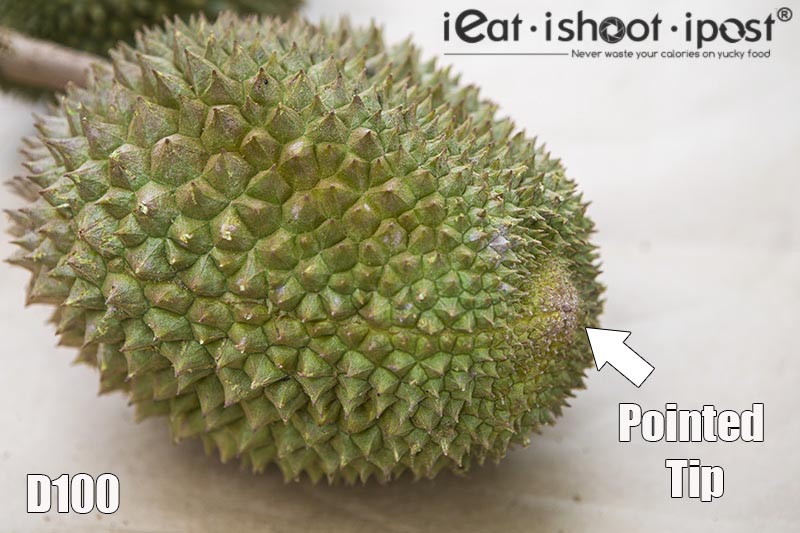
This fruit is also quite small, usually around 1 to 2 kg and the distinctive feature is the pointed tip at the base of the Durian. If you happen to be at 717 and this Durian is available, be sure to try it! It definitely ranks in up there as one of my top 5 Durians.
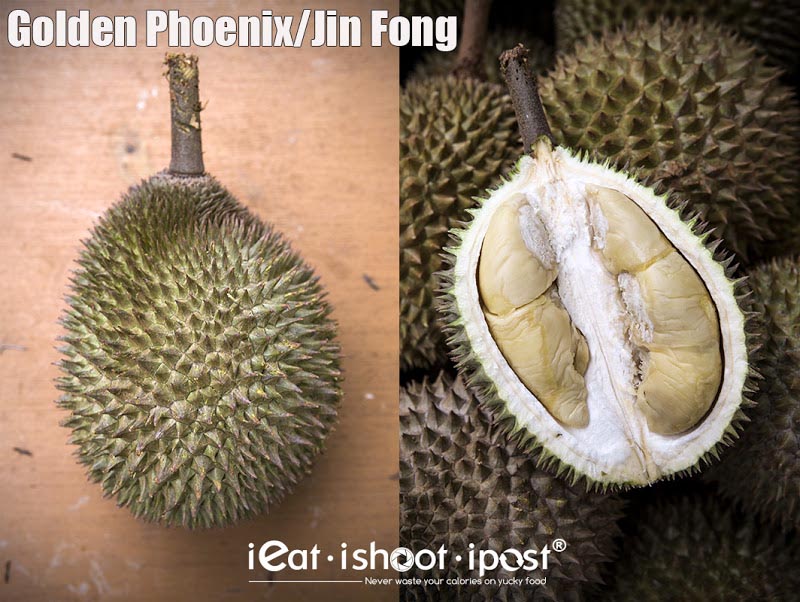
If the Mao Shan Wang is the current King of Durians then many say that the Golden Phoenix (金凤) is the Queen. This small to medium sized Durian is named after the couple who first registered it. The man was Jing (金 – Golden) and the lady was named Fong (凤 – Phoenix), hence the Durian is Jin Fong 金凤!
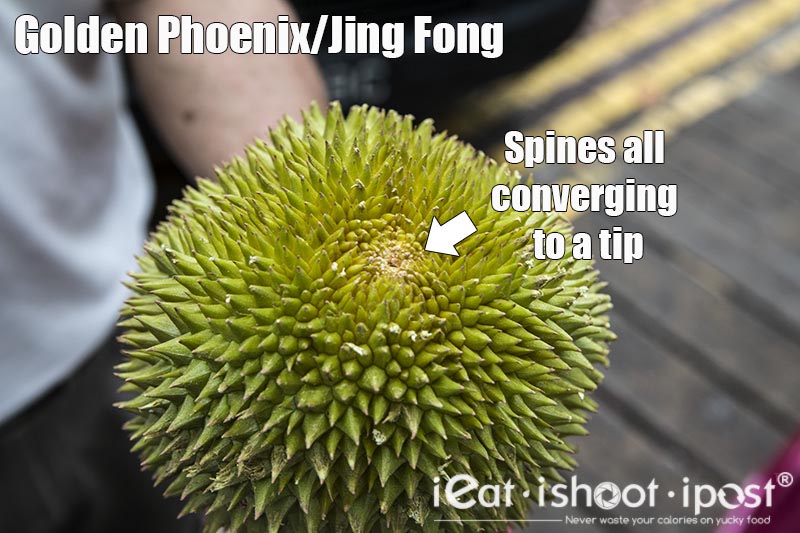
The flesh to husk ratio of the Golden Phoenix is very good, so even though the Durian is small, the thin husk and small seeds mean that you get lots of flesh! The fruit is often roundish and oval in shape and the spines are small and they converge and get squashed up culminating in a distinctive tip at the base of the fruit. The colour can vary from light green to greyish brown if they are grown on the top of the mountain. The flesh is a pale yellow colour and is dry but not overly pastey and it has a floral aroma. If you like your Durians bitter then Mr Goh will choose one of those with brown husk for you.
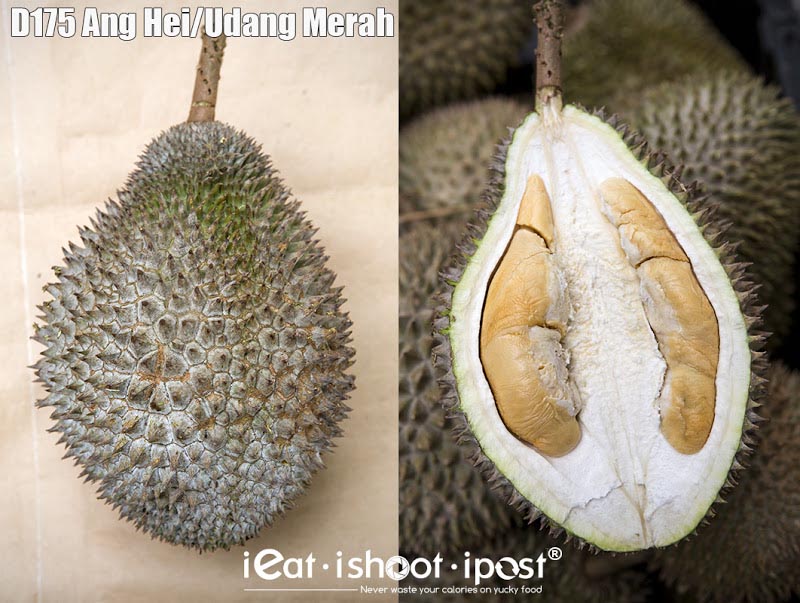
The Ang Hei is a much coveted fruit especially in Penang where it is said that it is even more popular than the Mao Shan Wang. It is not surprising since the fruit originated from there. I have yet to eat a Ang Hei from Penang since the journey is too long for the lorries to transport them to Singapore. Most of the Ang Hei here comes from Johor. I am told by the Durian experts that the Johor Ang Hei is no where near what they are like in Penang. This is something I hope to experience myself one day.
The D175 is a fairly large fruit which can weigh between 1.5kg to 3kg, it is usually ellipsoid, elongated in shape and the thorns are a brownish green colour and looks like its been covered with ash. The flesh itself is a pastel orangey colour, dry and creamy with a very distinct flavour. The flesh is sweet but can be wonderfully bitter when you get the right fruit. I have tasted several Ang Hei this season but the one at 717 was the best so far.
Conclusion
717 is a place for excellent quality Durians. The prices are usually a little higher than other places, but as Mr Goh said, it is better to spend a little more on a good Durian than to spend the same amount of money buying many Durians of lesser quality. This is one of the few places where you can find the D100 which is a definitely one that is worth eating. There is a basement car park with ample lots making it a very convenient place to park and eat your Durians!
Note:
Prices of durians can vary from season to season and tend to be more expensive at the beginning and end of the season. The prices here are reflective of prices past the middle of the season.
